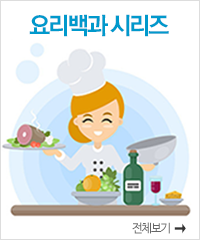- 건강추천식단
- 이달의식단
- 저염식 건강식단
- 향토음식레시피(北)
- 향토음식레시피(南)
- 오감만족레시피
- 실전활용레시피
- 테마별레시피
- 그린레시피 북
- ▸한식요리백과
- ▸곡류요리백과
- ▸농산물요리백과
- ▸축산물요리백과
- ▸수산물요리백과
- ▸건강한 식생활백과
- 이용안내
X
- 전통식품명
- 전통식품백과사전
- 전통식품문헌별
- 전통식품건강정보
- 전통식품일반정보
- 고조리서 이야기
- 우리음식 이야기
- 전통 떡 만들기
- 향토음식 갤러리
- 전통식품활용모델
- ▸궁중/종가/사찰
- ▸전통요리백과
- ▸발효음식백과
- ▸북한/연변음식백과
- 이용안내
X
- 한방사전식품명
- 한방식품백과사전
- 한방사전문헌별
- 동의보감
- 동의보감문헌별
- 동의보감 민간요법
- 죽순 일품요리
- 양잠산물 건강요리
- 양봉산물 건강요리
- 한방약술
- 사상체질의학
- 한방 카드뉴스
- ▸인삼/버섯요리백과
- ▸약선요리백과
- 이용안내
X
- 전통주갤러리
- 전통주 양조장별
- 찾아가는 양조장
- 전통주 활용정보
- 우리술 연재칼럼
- 우리술 & 일품안주
- 전통주류 & 안주
- 전통주 테이스팅
- 우리술 이야기 Ⅰ.
- 우리술 이야기 Ⅱ.
- ▸전통주창업백과
- ▸칵테일/와인백과
- 이용안내
X
- 식재료이용정보
- 축산물이용정보
- 제철농산물
- 제철수산물
- 이달의 수산물
- 국내수산물식별법
- 식재료 기능성
- 식재료 건강효능
- 우수 축산물브랜드
- 식품산업우수사례
- 김치 제조업체
- 농수산물자료실
- ▸과일/과채요리백과
- ▸외식업식재료백과
- 이용안내
X
-
KFA케이푸드아카이브

 KFA(K-Food Archive) 약 100만여개 Big Data Project
KFA(K-Food Archive) 약 100만여개 Big Data Project






 통합검색
통합검색







 gajukjangajji
gajukjangajji 가죽장아찌
가죽장아찌
 Pickled Red Toon Shoot
Pickled Red Toon Shoot チャンチンの若芽の漬物
チャンチンの若芽の漬物 椿芽酱菜
椿芽酱菜 •농림축산식품부 문화체육관광부 국립국어원 한국관광공사 •한식진흥원
•농림축산식품부 문화체육관광부 국립국어원 한국관광공사 •한식진흥원












